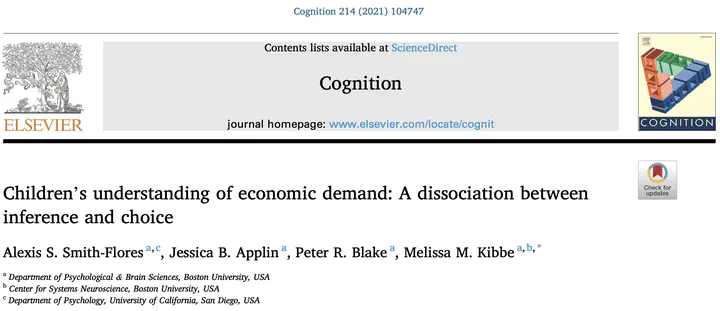Children's understanding of economic demand: A dissociation between inference and choice

Abstract
Adults infer that resources that become scarce over time are in higher demand, and use this “demand inference” to guide their own economic decisions. However, it is unclear when children begin to understand and use economic demand. In six experiments, we investigated the development of demand inference and demand-based economic decisions in 4- to 10-year-old children and adults in the United States. In Experiments 1–5, we showed children two boxes with the same number of compartments but containing different numbers of face-down stickers and varied the information provided about how those differences arose (e.g. that other children had taken the stickers). In separate experiments, we asked children to buy or trade to get a sticker for themselves or to predict what other children would do. We also asked them which set of stickers they thought the other children had preferred to assess their ability to make a demand inference separately from their own choice. Across ex- periments, children were able to make a demand inference about children’s past preferences by 6 years of age. However, children did not use this demand information when making choices for themselves or when predicting what another child would select in the future. In Experiment 6, we adapted the task for adults and found that adult participants inferred that the set containing fewer resources was in higher demand, and selected the higher demand resource for themselves at rates significantly above chance. The overall pattern of results suggests a dissociation between economic inference and economic decisions during early-to-middle childhood. We discuss implications for our understanding of the development of economic reasoning.